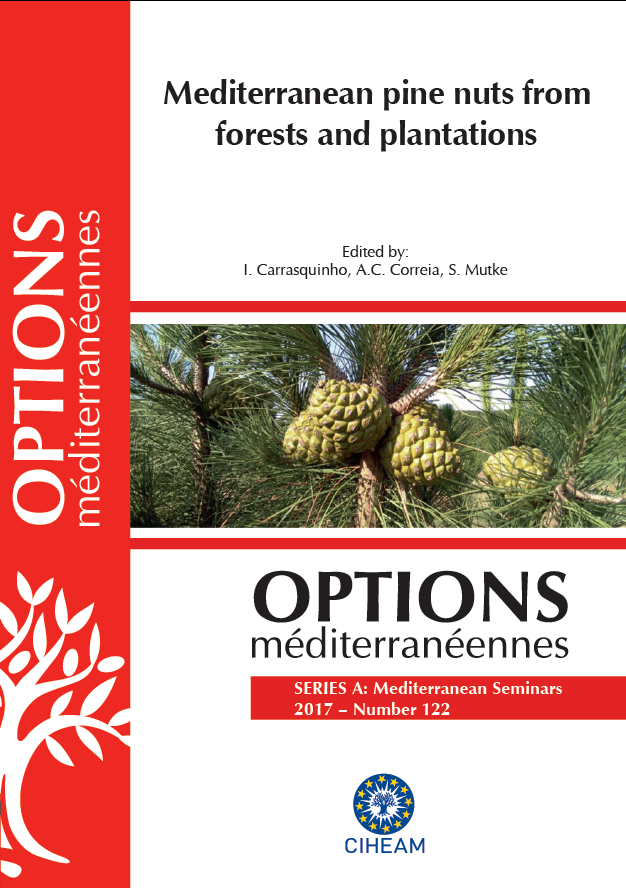| Article précédent | p. 91-107 | Article suivant |
Cone pests of stone pine in the Mediterranean Basin
Stone pines in the Mediterranean Basin are one of the most defended pines and only few pest species can cause damage, such as defoliators (Thaumetopoea pytiocampa (Schiff.)) or bark beetles (Tomicus sp. and Ips sexdentatus (Boern.)). In certain situations these insects can weaken or even cause tree mortality, but the main cause for concern are insects like Pissodes validirostris Gyll (Coleoptera:Curculionidae), Dioryctria mendacella Staudinger (Lepidoptera: Pyralidae) and Leptoglossus occidentalis Heidemann (Hemiptera: Coreidae) that feed on cones and seeds, negatively impacting the economy. Two of the insect species are indigenous whereas the third, L. occidentalis, is an invasive species originating from America. During seed development substantial resources are used during embryogenesis as seeds provide a higher concentrated source of carbohydrates, fat and proteins and low water content, as compared with young needles. Species like P. validirostris and D. mendacella burrow through and feed on seed-bearing structures or cones, while L. occidentalis suck out the contents of seeds or seed-bearing structures as well as needles, flowers, shoots and twigs. At the same time, these specialized insects have developed diverse ecological strategies to complete their biological cycle. For example, P. validirostris completes its immature stages inside the cones, while D. mendacella larvae leave the cone to pupate in the soil, and L. occidentalis completes its development outside cones. In addition to direct consumption, insect attacks can cause fruit abortion or facilitate introduction of pathogens. For example, the sap-sucking insect L. occidentalis causes transmission of the fungus Diplodia sapinea (Fr.) Fuckel. Impacts of cone pests are related to reductions in seed production and productivity at the economic level and to reforestation and afforestation programs at the economic and ecological levels. In stone pine forests, phenology and seed production can be highly irregular in both space and time, directly affecting the pest population dynamics. In this paper we summarize the current knowledge on the more important cone pests in the Mediterranean Basin, emphasizing: (i) biological and ecological mechanisms involved in the establishment and spread of these species, (ii) the associated damages and, (iii) strategies available for integrated management with the objective of controlling pest populations.
- [ Afficher ]
- [ Télécharger ]
- [ Exporter la citation ]
Vous pouvez télécharger la citation au format :
- [ Imprimer ]
-
Mots-clés
PINUS PINEACiter cet article
Sousa E., Pimpao M., Valdiviesso T., Naves P., Branco M. Cone pests of stone pine in the Mediterranean Basin. In : Carrasquinho I. (ed.), Correia A.C. (ed.), Mutke S. (ed.). Mediterranean pine nuts from forests and plantations. Zaragoza : CIHEAM, 2017. p. 91-107. (Options Méditerranéennes : Série A. Séminaires Méditerranéens; n. 122). 2. International Meeting on Mediterranean Stone Pine for Agroforestry : AgroPine2016, 2016/05/18-20, Oeiras (Portugal). http://om.ciheam.org/om/pdf/a122/00007247.pdf



